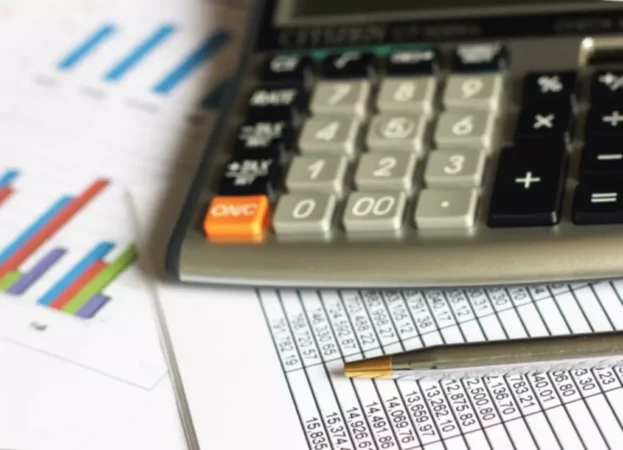Notes receivable is a balance sheet item that reflects the value of the notes that the Company is to receive and for which it is to receive payment. Promissory notes are promises to pay money to another party on or before a specified date. They give the holder or bearer the right to receive the funds specified in the legal agreement.
Notes receivable can be treated as a current or non-current asset:
- If they are payable within a year, it is treated as a current asset on the balance sheet.
- If it is not due for payment before a date that is more than one year later, then it is treated as a non-current asset on the balance sheet.
A business allows customers to convert their business receivables into notes receivable. The debtor usually benefits by having more time to pay.
Accounts receivable Terms
The payee is the party receiving payment under the promissory note terms, while the maker is the party that is obligated to send the funds to the payee. As specified in the notice, the amount of compensation is the principal amount. The principal amount must be paid on the day the bill is redeemed.
The calculation of interest received on a bill of exchange receivable:
Principal amount x interest rate x period = interest received
An entity has a large number of outstanding notes receivable. It should consider establishing a provision for doubtful notes receivable, against which it can accrue an insufficient debt balance and write off any notes receivable that subsequently become uncollectible. Uncollectible receivables are called dishonored.
Accounts Receivable vs. Notes Receivable
Although receivables and notes receivable appear on the balance sheet as assets and show outstanding debts that clients and customers owe to the business, there are some differences between the two statuses, including
- Formality: An agreement to pay receivables is more informal than notes receivable. The customer and the company representative must sign the promissory note to be legally binding.
- Interest: Accounts receivable items do not include interest payments, while note receivable items may include interest at the Company’s discretion. Details of the interest for which the client is responsible are contained in the bill of exchange attached to the debt.
- Terms of payment: Receivables may include payment terms; this is more common in notes receivable due to the promissory note, which helps determine precisely what the customer owns when they must pay and what interest will accrue.
- Duration: Notes receivable usually take longer to balance and receive payment from customers because notes receivable are generated when customers cannot pay their regular invoice and must agree to different payment terms.
- Negotiability: Notes receivables are negotiable, meaning you can transfer the note as a way to sell your ownership of it to another party. The new owner of the note will claim it in the same way as the original payee.
- Current assets and non-current assets: Notes receivable may be current or non-current assets, depending on when the customer is expected or pays his note. Any part of their debt that the client repays within one year is a current asset, but the part that remains outstanding within a year is a non-current asset.
- Conversion: Businesses convert a receivable line into notes receivable if a customer has stated that he may have difficulty paying the debt in full within a shorter period. The debtor has more time to pay off the debt than he originally had. This is beneficial for the Company, and the debtor since the Company receives income from the accrued interest equivalent to an increase in money for the Company.
The main difference between accounts receivable and notes receivable is that accounts receivable are funds owed to customers, while notes receivable are a written promise from a supplier who has agreed to pay a sum of money in the future.
Critical components of notes receivable
Base Value: The face value of a banknote.
Maker: is the person who makes the note and promises to pay the note holder. To the maker, the bill is classified as a bill payable.
Payee: is the person who holds the note and is expected to receive payment from the drawer. For the payee, the note is classified as a note receivable.
Claimed Interest: A note receivable usually includes a predetermined interest rate; the drawer is obliged to pay the amount of interest due in addition to the principal at the same time as the payment of the principal.
Maturity: The period during which the bill must be repaid. Notes receivable are generally not subject to prepayment penalties so that the drawer may redeem the note on or before the note’s due date.
Note Receivable Example
Company A sells equipment to Company B for $300,000, payable within 30 days. After 45 days of non-payment by Company B, both parties agree that Company B issues a promissory note for the principal amount of $300,000 at 10% interest for a payment of $100,000 plus interest payable at the end of the next three months. The note may state that the total interest due must be paid along with the third and final principal payment of $100,000.
Company A writes a receivable entry on its balance sheet, and Company B writes a payable debt entry on its balance sheet. The principal cost is $300,000, of which $100,000 must be paid monthly. The agreed interest rate on the promissory note is 10%.
Example Journal Entries for Receivables
A note receivable of $300,000 maturing within the next three months, with payments of $100,000 and an interest rate of 10%, is registered to Company at the end of each month.
The proper accounting entries for Company A look like this:
| Account title | Debt | Credit |
| Notes receivable | $300,000 | |
| Account receivable | $300,000 |
Company B pays $100000 plus interest = $2465.75 ($300000×10%x30/365 days=$2465.75).
| Account title | Debt | Credit |
| Cash | $102,465.75 | |
| Notes receivables | $100,000 | |
| Interest income | $2,465.75 |
Company B pays $100,000 plus $200,000 interest x10%x30/365 days = $1643.84. The interest is less because the principal outstanding is reduced by previous payments and makes only $200000 ($300000-$100000).
| Account title | Debt | Credit |
| Cash | $101,643.84 | |
| Notes receivable | $100,000 | |
| Interest income | $1,643.84 |
Company B pays the remainder of the principal of $100,000 plus interest of $100000×10%x30/365 days = $821.92.
| Account title | Debt | Credit |
| Cash | $100,821.92 | |
| Notes receivable | $100,000 | |
| Interest income | $821.92 |
After three months, the bill with interest is fully repaid.
Notes Receivable Benefits
Businesses get more money than they might otherwise have. Notes receivables are a way to recognize their debts and enter into an agreement with the Company that assures the organization’s management that they are more likely to receive funds owed to the business.
Conclusion
Notes receivable are applicable asset accounts for a business and play a role in increasing the collection of amounts due and generating income in the form of interest.


















